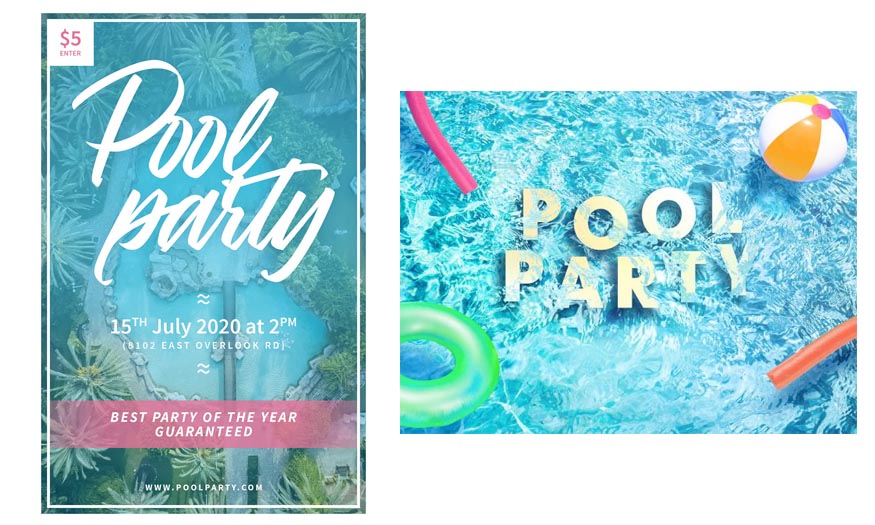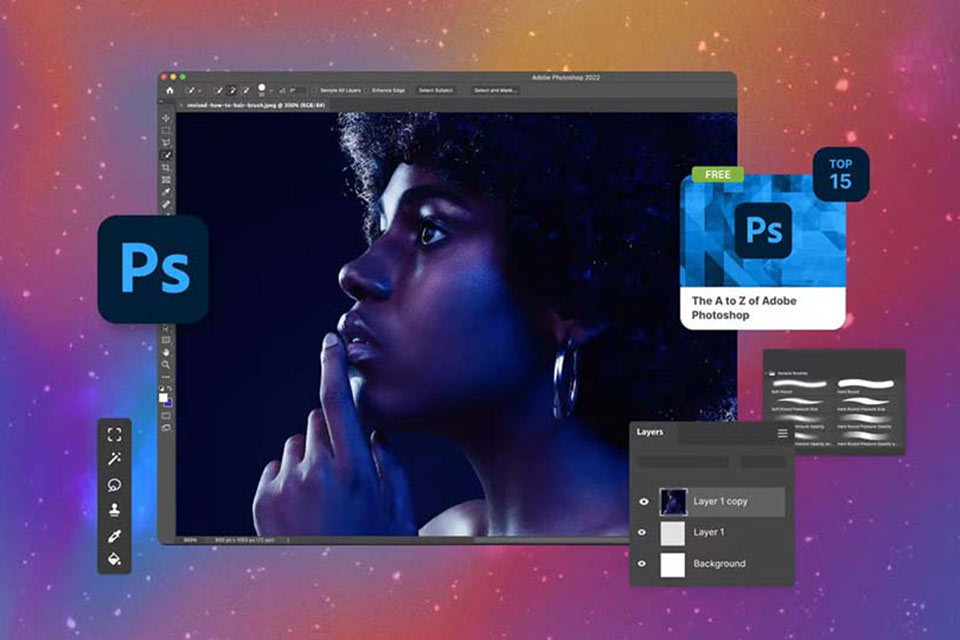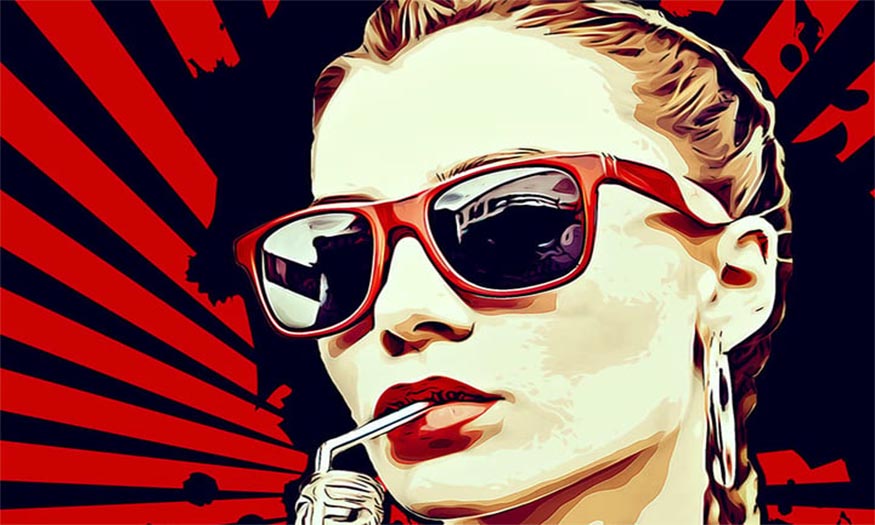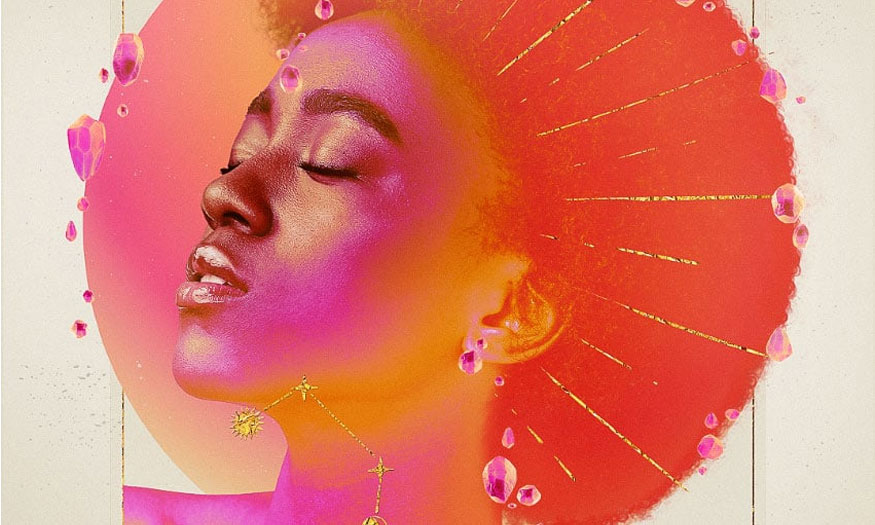Best Selling Products
What is a banner? 06 steps to design a standard banner
Nội dung
- 1. What is a banner?
- 2. What is the purpose of banners?
- 2.1 Badge Banner
- 2.2 Organization and union banners
- 2.3 Sports Banners
- 2.4 Advertising banners
- 3. What does a banner include?
- 4. The role of banners in advertising campaigns
- 4.1 Helps create a database of potential customers for the business
- 4.2 Help businesses retarget their brands
- 4.3 Helps increase customer awareness of the brand
- 4.4 Highlight new products/services
- 5. Standard sizes of banners
- 5.1 Newspaper and magazine banners
- 5.2 Street Banners
- 5.3 Banner online
- 6. 06 Steps to design a standard banner
- 6.1 Step 1: Identify customer target and purchasing behavior
- 6.2 Step 2: Identify online channels to choose the right size
- 6.3 Step 3: Determine the message the banner conveys to customers
- 6.4 Step 4: Build layout and design advertising banner
- 6.5 Step 5: Insert CTA (Call To Action)
- 6.6 Step 6: Check, edit, test
- 7. Experience in designing beautiful, unique, professional banners
- 7.1 Understand the sizes of different types of banners
- 7.2 Understand the 3B rule
- 7.3 Ensure concise content
- 7.4 Choose colors wisely
- 7.5 Use high quality images
- 7.6 Consider dynamic ads
- 7.7 Design banners with clear focus
- 7.8 Keep the banner simple
- 8. Banner design software
- 8.2. TOP Banner design software on the computer
Banners appear in all areas of life, you can see them anywhere from the street, in the company, on mass media,... It is a design publication that has a huge effect in advertising, branding,... helping to convey messages extremely optimally. Let's dig deeper into banners with SaDesign through the following shares.
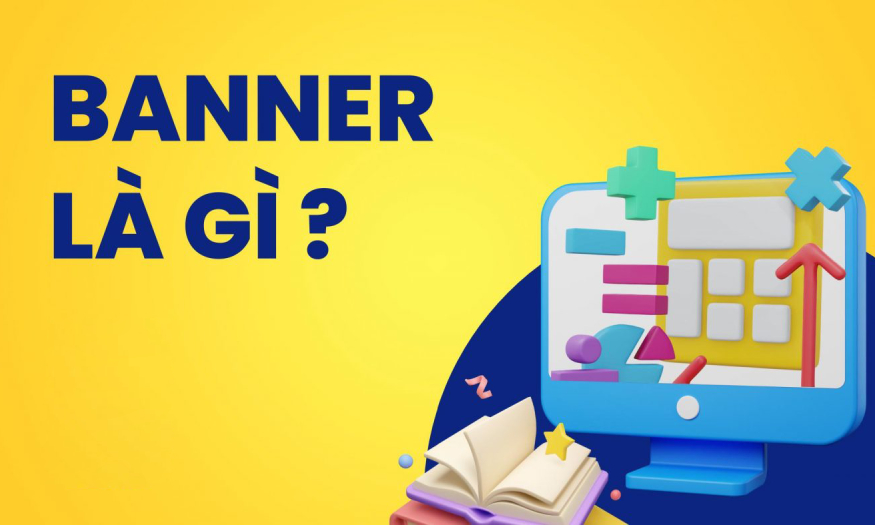
1. What is a banner?
.jpg)
Banner is an English term meaning a form of advertising publication for events, products, services, brand branding, etc. Banners come in many forms, but the most common are the following 3 forms:
banner
Newspaper and magazine banners: appear in newspapers, magazines, journals,...
Street banners: this type is usually shop signs, or billboards placed on the street,... It stands out with its large size, placed in crowded places to attract attention.
Online advertising banners appear on websites.
2. What is the purpose of banners?
Currently, banners are divided into many different types, depending on the type of banner, it has different purposes, specifically:
2.1 Badge Banner
This type of banner is also known as a pennant. It is usually designed in the form of a simple circular, square, or rectangular badge with the organization's signature color.
It is used to represent an organization, group, or individual in an event, ceremony, or competition. This type of banner is intended to represent the honor, prestige, and recognition of that organization or individual.
2.2 Organization and union banners
.jpg)
Banners of organizations and unions are often used in union activities such as demonstrations, marches, etc. They usually have the logo of the General Confederation.
This type of banner helps to increase the recognition of that organization in the community, in events. The purpose of this banner is to help attract public attention, convey the message of the organization, show solidarity as well as the rights of union members.
2.3 Sports Banners
Sports banners are popular at sports competitions of teams or athletes. The banner will have the logo, name, slogan, and colors of the team or individual being cheered on.
Banners are often brought into the stands by fans or hung on the rafters of stadiums, media campaigns for events,...
It is used to support, cheer, encourage the spirit of competition, and promote sporting events.
2.4 Advertising banners
.jpg)
This is the most popular type of banner, used to promote products, services, and brands. It aims to attract the attention of potential customers, convey advertising messages, and promote purchases and service usage.
Advertising banners appear commonly on online media, outdoor billboards, commercial events, and exhibitions.
3. What does a banner include?
.jpg)
A banner usually includes the following basic elements:
Main image: contains 1 or more attractive images to attract attention and convey the message visually.
Main text: This is the core message or main title of the banner; it should be short and clear.
Brand logo: helps identify the brand; it must be placed in a prominent position on the banner.
Call to action (CTA): is a sentence or phrase that encourages viewers to take a specific action. Examples include “Buy Now”, “Sign Up”, “Contact”.
Additional information: you can add some information to the banner, such as address, phone number and promotional information if needed.
4. The role of banners in advertising campaigns
Banners are most popular today in advertising; they play an extremely important role as follows:
4.1 Helps create a database of potential customers for the business
In fact, banners are the #1 best way to build a customer base. Through advertising banners, you will know which customers are interested in your products and services. It also helps you know which audience will learn about your products later. From there, you will build a potential customer file for your business to continue other campaigns.
4.2 Help businesses retarget their brands
If a customer visits your website but does not register, leave a message or make a purchase decision, you can use a unique banner ad to re-engage them.
4.3 Helps increase customer awareness of the brand
Using advertising banners also helps customers remember the brand better, thereby easily recognizing the products and services that the business provides.
.jpg)
Advertising banners will be placed on websites with high traffic, providing interesting and useful information. Because these websites will easily create trust with customers when they click on the advertisement.
4.4 Highlight new products/services
Banners designed with bright colors, eye-catching images and clear messages will attract the attention of potential customers.
When a new product/service is introduced, using a banner is an effective solution to ensure it attracts customers' attention and is not overlooked among a series of other information.
5. Standard sizes of banners
Because they are applied on different platforms, the size of each type of banner also has its own standards, specifically as follows:
5.1 Newspaper and magazine banners
Newspaper banners are a traditional form of advertising widely used to attract readers' attention, promote products, services, and brands. Newspaper banners usually have a fixed size to fit the available newspaper format.
.jpg)
Some popular sizes include:
Full Page Banner: 8.5 x 11 inches (~21.6 x 27.9 cm).
Half Page Banner: 8.5 x 5.5 inches (~21.6 x 13.97 cm).
Banner 1/3 trang (Third Page Banner): 8.5 x 3.5 inch (~21.6 x 8.9 cm).
5.2 Street Banners
.jpg)
Street banners are large in size, eye-catching in color, often placed in places with a lot of people passing by or high up to attract attention.
Street banners come in many different sizes depending on the location and purpose of use. However, they also have some standard sizes as follows:
Horizontal Street Banner: 3 x 6 meters or 4 x 8 meters.
Vertical Street Banner: 0.8 x 2 meters or 1 x 2.5 meters.
Large outdoor banner (Billboard): 4.3 x 14.6 meters or 3.2 x 11 meters.
5.3 Banner online
.jpg)
This banner is present on the internet platform, it can be on hosting websites or the main website of the business. It is not measured in conventional units but in px.
Online banner sizes are the most diverse and the most commonly used include:
Leaderboard: 728 x 90 pixels. This is a banner located at the top of the website, has a large horizontal size, and helps attract attention as soon as you visit the page.
Medium Rectangle: 300 x 250 pixels. This type usually appears in the body of a web page or on the right side of the page.
Large Rectangle: 336 x 280 pixels. It's like Medium Rectangle but a little larger, giving more emphasis to the ad content.
Skyscraper: 160 x 600 pixels. Usually vertical and appears at the edge of a web page, stretching the length of the page.
Mobile Banner: 320 x 50 pixels. This is the standard size for banners displayed on mobile devices.
6. 06 Steps to design a standard banner
Banner design is not too complicated, but it needs to follow the correct standards to create a quality banner that attracts customers. Refer to the steps below.
6.1 Step 1: Identify customer target and purchasing behavior
The most important thing when designing a banner is to clearly understand the target audience.
You must determine the age, gender, interests, needs and purchasing behavior of your target customer base.
Understanding your customers will help you choose the right colors, images and messages to make your banner impressive and attractive.
6.2 Step 2: Identify online channels to choose the right size
.jpg)
Banners are now popular on different online channels such as web, social networks,... Each channel has different size and format requirements. Therefore, determining the online channel to post the banner is an important step.
Through that, you should choose the appropriate banner size, ensuring that it will display properly and attractively on all devices, from computers to mobile phones.
6.3 Step 3: Determine the message the banner conveys to customers
An effective banner needs to have a clear, easy-to-understand message. You need to identify the main message you want to convey to customers. It must be impressive, concise, direct, easy to remember, to quickly impress the viewer.
6.4 Step 4: Build layout and design advertising banner
The layout of the banner is extremely important to guide the viewer's eyes to the main message and CTA. Use a clean, simple layout with images, text, and logos placed properly. The colors and fonts must match the brand and be easy to read on the banner background.
6.5 Step 5: Insert CTA (Call To Action)
.jpg)
CTA is required on the banner, helping guide customers to take the action you want, such as "Buy now", "Sign up",...
The CTA should be placed in a prominent, easy-to-see position, with a contrasting color scheme to attract the eye. The CTA text should be clear and have a strong call to action.
6.6 Step 6: Check, edit, test
After designing, edit carefully and run a test. When putting the banner into an advertising campaign, you need to review the results, evaluate the effectiveness and then edit to suit customer tastes. This helps attract more attention from customers. Time will prove how effective your advertising banner is.
7. Experience in designing beautiful, unique, professional banners
Some of the following tips can help you design impressive and highly effective banners.
7.1 Understand the sizes of different types of banners
.jpg)
Banners currently come in many different sizes, and they often change based on trends. Based on the location of the banner, we can refer to some popular sizes as follows:
Long rectangle: 728×90 px
Half page: 300×600 px
Large Rectangle: 336×280 px
Medium Rectangle: 300×250 px
Mobile banner: 320×100 px
7.2 Understand the 3B rule
Brand: must combine the brand logo harmoniously on the banner.
Buzz: use unique, fresh words to create a “buzz” with customers.
Badger (continuous appearance): online banners must appear continuously, it will help customers click to register through call-to-action buttons.
7.3 Ensure concise content
The content on the banner needs to be concise, clear, not rambling or lengthy because the viewer's attention span is extremely short.
Use few words but with a strong impact, attract attention, and convey the right message to the viewer.
.jpg)
7.4 Choose colors wisely
The colors on the banner also help convey strong emotions and messages. Choose clever, harmonious, and outstanding colors for the banner.
Contrasting colors: use contrasting colors to highlight important elements like text or CTAs.
Brand color: use brand color to ensure consistency and brand recognition.
7.5 Use high quality images
Images determine the appeal of a banner. So make sure the images on the banner are high quality, sharp, and consistent with the message conveyed.
Using blurry, poor quality images can detract from the professionalism of your banner.
7.6 Consider dynamic ads
Animated banners can be more engaging than static banners. Subtle motion effects can bring your banner to life without losing any flair.
However, avoid using too many distracting effects, making sure the movement helps convey the message rather than distracting.
7.7 Design banners with clear focus
.jpg)
Every banner should have a clear focal point. This is the point you want the viewer to focus on immediately. The focal point could be a product image, a message, or a CTA.
To highlight the focal point, try design elements like larger size, bold colors, and strategic placement within the banner layout.
7.8 Keep the banner simple
Advertising banners must be simple, not confusing and too informative. In particular, the amount of information and message must be just enough, subtly conveyed to customers.
Note, advertising banners must not create the feeling that viewers are being enticed or forced to use or buy products or services.
8. Banner design software
Below are some of the most used banner design software you can refer to.
8.1. 9 online banner design software
8.1.1. Adobe Spark
This is an online graphic design application. It allows users to create banner designs easily with images taken from anywhere. In addition, the application also has more than 3000 themed designs with new creative styles, suitable for trends.
.jpg)
In particular, Adobe Spark also has the feature of transforming designs into videos. With the Animation section, users can easily create text movements, images, and change colors as desired.
8.1.2. Canva
Launched in 2012, Canva is now a leading online design platform. The application specializes in supporting the design of communication publications such as banners, posters, logos, business cards, CVs,...
The operations on Canva are quite easy, so it is suitable for non-professionals. Moreover, Canva also has a super diverse and rich design library, attracting a large number of users.
8.1.3. Bannersnack
Bannersnack attracts users with its clean interface and design. You can use available banner templates or create your own banner.
This software supports saving in many different formats such as JPG, PNG, MP4, HTML5, GIF.
There is a free version or $17/month in the paid version.
8.1.4. Piktochart
.jpg)
Piktochart is an incredibly powerful graphic design website. The interface is intuitive and easy to use. It has a huge library of pre-made graphic icons on the website, unlimited design creation, and completely free downloads.
There is a free version or $39.99/year for the paid version.
8.1.5. Postermywall
Poster My Wall is a software specialized for graphic designers, marketers, and businesses. There are more than 170,000 design templates to help users easily come up with ideas.
Note, it only supports Windows platform and will cost you $8.33/month.
8.1.6. Photo
Fotor is a popular online design website, which is special because of its One-Tap Enhance tool. This tool allows you to edit any design that designers are developing. At the same time, Fotor also has a huge number of banner templates to help you easily come up with ideas.
The application supports multiple platforms from Windows, MacOS, Android, iOS. You will have to pay $19.99/month to use it.
.jpg)
8.1.7. PhotoJet
FotoJet is the ultimate app for creating banners for Facebook, YouTube, and other social media platforms. The site has a variety of easy-to-use editing options, with over 700 banner templates available. In particular, you can instantly share your creations on social media. This app is completely free.
8.1.8. My Banner Maker
My Banner Maker can help you come up with banner ideas even if you have no idea. The huge stock image library or sample publications can help you a lot while designing.
This application supports online and is free to use.
8.1.9. BannerWoo
BannerWoo is a standout design tool with a unique drag and drop feature that lets you create banners in any color, size, and style.
This software can also create optimized banners on digital platforms, Google ads, social networks, etc.
The application only supports Windows platform.
8.2. TOP Banner design software on the computer
8.2.1. Photoshop
.jpg)
Photoshop is the best graphics software for professional banner designers today.
This software has many tools to support the creation of professional banners. In addition, it also supports the creation of book cover designs, advertising publications, photo editing, etc.
However, it will be quite difficult to use for beginners.
You can use the software for free for 7 days. After that, you have to pay to continue using it.
8.2.2. Illustrator
Illustrator has the same “father” as Photoshop, both are products of Adobe. This is professional graphic design software that allows you to design everything such as banners, web graphics, mobile device graphics, logos, billboards,...
It also supports vector graphics for comfortable printing and enlargement while still ensuring quality.
Like Photoshop, you can use the software for free for 7 days. After that, you have to pay to continue using it.
8.2.3. Banner Designer Pro
Banner Designer Pro is a software that specializes in designing banners quickly and effectively. This software can also create many types of animations, wallpapers, etc. It allows users to freely create web-based advertising banners, logos, web buttons, website titles, etc.
.jpg)
The software has an interface that guides users step by step. Supports image compression in GIF and JPEG formats.
8.2.4. Vecteez
Vecteezy contains a huge collection of photos and templates, so it is an ideal banner design address you can refer to.
This software allows users to download and use photos for free. However, to use more advanced features, users can purchase the Pro package. Vecteezy currently offers 03 types of licenses for all its content: Free, Pro and Pro Extended.
8.2.5. InDesign
InDesign is a software that supports the design of banners, books, lesson plans, etc. It stands out with its ability to control prints and publish designs for printing.
InDesign is the top choice for professional banner, poster, flyer, card, book, newspaper design... It also has page layout capabilities and is compatible with many different sizes.
.jpg)
Supports many types of image and text file formats, as well as links to Adobe Photoshop and illustrator image files such as SPS, Ai, JPEG, PDF, etc.
8.2.6. Flash Banner Creator
Flash Banner Creator is a banner design application that allows users to design flash-style banners with many beautiful effects to decorate websites.
This software provides many tools to create animated flash banner slideshows, unique flash banner effects to make your website more attractive and engaging.
You can adjust banner size, frame ratio,... to suit and then export to SWF, HTML file to add directly to the website.
8.2.7. Flax
Another professional banner design software is Flax. It has a unique and huge image library, helping your pages and websites to be impressive and attractive.
Flax provides many beautiful flash effects for banners, you can choose the default banner template to adjust color, sharpness,....
Customizations such as font, font color, background image,... will make your banner more beautiful and interesting.
8.2.8. GIF Banner Designer
.jpg)
GIF Banner Designer is a professional banner design software. It provides users with a set of tools to support designing banners according to their own style and preferences.
This software stands out with features like adding static wallpapers, building banners, inserting text, animations, adjusting brightness,
8.2.9. SWFText
SWFText is a professional banner design software, providing many text creation tools for banners. It has more than 200 background and text effects to make banner creation extremely simple.
Users can create unique banner templates with integrated background music, preview and adjust quality easily.
8.2.10. Be funky
BeFunky software stands out with a large number of editing features and is completely free. You can design banners here very easily with a huge photo library, diverse fonts, to edit the banner to make it most beautiful.
Simple to use, does not require high skills, suitable for everyone.
Above is a summary of the most detailed information about banners as well as how to design banners. Hopefully, the above sharing can be useful to you.









































